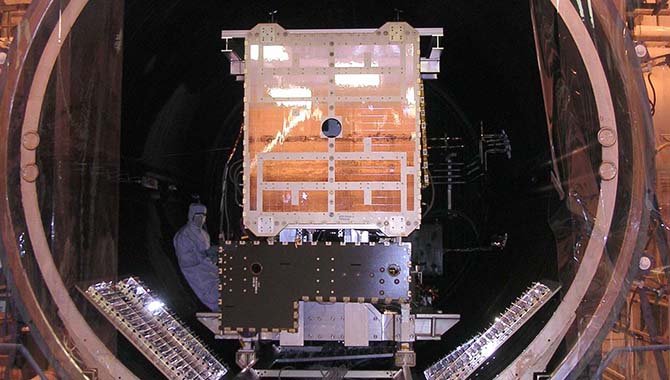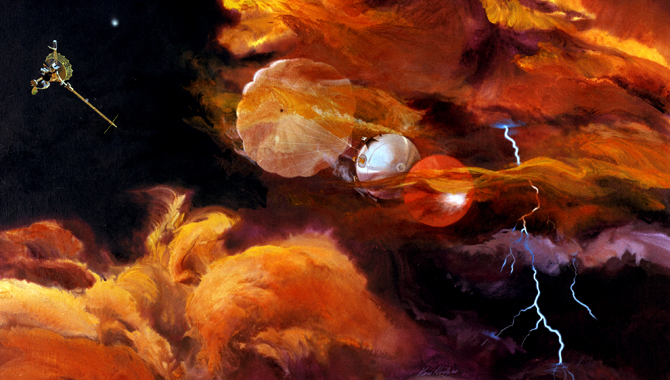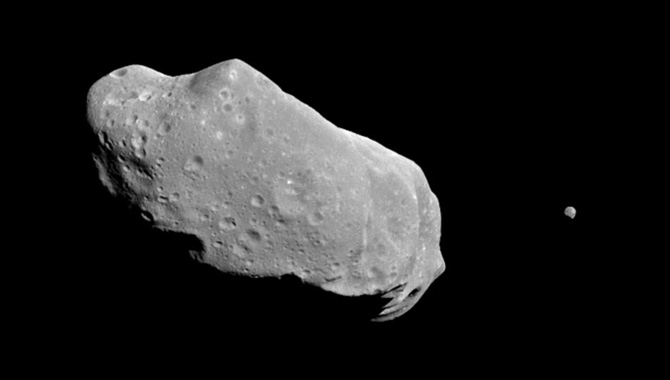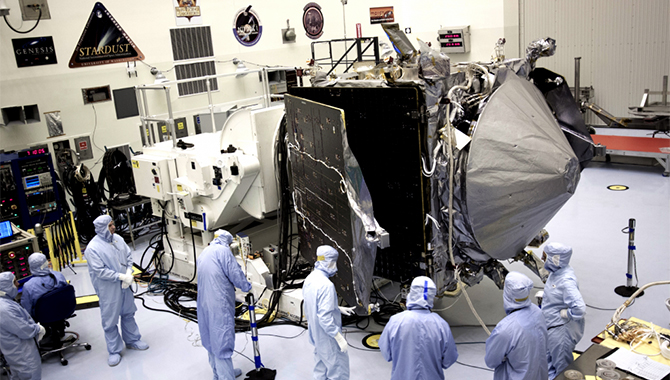
NASA’s Dawn spacecraft, shown here in the thermal vacuum chamber, is a Planetary Science Discovery Program mission that began orbiting and exploring the dwarf planet Ceres in 2015.
Photo Credit: NASA/JPL
From exploring new worlds to investing in novel technology, NASA’s Planetary Science Division (PSD) continues to build on its 2015 successes.
Last year was an exciting one for solar system exploration, from the discovery of liquid water on Mars to New Horizons’ first-ever flyby of the Pluto system. Thanks in part to those successes, the PSD is looking forward to a range of novel initiatives in the coming year, including the insertion of Juno into orbit around Jupiter in July and the launch of the Origins Spectral Interpretation Resource Identification Security-Regolith Explorer (OSIRIS-Rex) spacecraft to the asteroid Bennu in September.
“Success breeds success,” said PSD director Jim Green as he discussed the division’s funding for 2016 at the 47th Lunar and Planetary Science Conference in Washington, DC. “At $1.63 billion, this is the highest budget Planetary Science has ever [had].”
Some of the budget will continue to support Mars missions, including the Mars Atmosphere and Volatile EvolutioN (MAVEN) mission, the Mars Reconnaissance Orbiter, and the 2001 Mars Odyssey, the longest-operating spacecraft around the red planet. Mars 2020 is also on track, having completed its preliminary design review in February 2016. Due to the late delivery of the SEIS instrument, the InSight launch is postponed to 2018.
In addition to $277 million for planetary science research, the 2016 budget includes $197 million for technology development. The PSD will use the funds—which earmark $25 million for advancing icy satellite surface technology—to support diverse projects through the Discovery, New Frontiers, and Mars Exploration Programs. Of particular interest are frozen worlds such as Enceladus, Titan, and Europa that appear to contain subsurface oceans and the potential to harbor life beyond Earth.
“One of the top things in the Planetary Decadal [Survey]—last decade and this decade—is going to Europa,” said Green. He noted that Congress expressed interest in a lander mission, although that initiative is not a current priority. “In planetary science, we do it very methodically. Flyby, orbit, land, rove, and return samples.” This follows the same order of exploration that the agency used for both the moon and Mars.
For Europa, the process will begin with a series of dedicated flybys. Currently, little is known about the sixth-closest moon of Jupiter. NASA’s Galileo mission included 11 flybys of it yet only captured approximately 10% of the satellite’s surface at resolutions of 200 meters or better. The upcoming Europa Multiple Flyby Mission will feature 45 flybys, some as close as 16 miles above the surface.
“The Europa Multiple Flyby Mission is all about looking at the ice shell and the ocean: its thickness, its composition, what the geological processes are… and how does the ocean communicate to the surface. Also, providing high-resolution, detailed imagery hopefully of the right places necessary for us to make decisions on potentially a lander going to Europa,” said Green.
The PSD is exploring a number of options for sending an orbiter to Europa, including the Space Launch System (SLS). Doing so would enable a spacecraft to reach Europa in less than three years compared with the eight years and multiple interior gravity assists that would be needed if a different launch vehicle were used. Although additional funding would be needed to utilize the SLS, doing so fits with past models used by the PSD to send its science into space.
“The total infrastructure and the ability to keep the personnel active to launch an SLS is believed to be borne completely by Human Exploration [and Operations Mission Directorate]. Much like the shuttle: we leveraged and used the shuttle quite a bit, with only an incremental cost associated with it. So…shuttle is the model,” said Green.
Before the Europa mission sets out in search of signs of potential life on Jupiter’s icy moon, the division will bid goodbye to a long-standing mission that has investigated another potentially life-supporting moon: Saturn’s satellite Enceladus. Cassini, which began as a means of exploring the Saturn system and delivering the Hyugens probe to Saturn’s moon Titan, is now nearing the end of its final extended mission. This Solstice Mission leverages a unique opportunity to examine the Saturn system in midsummer, when its northern poles are illuminated by sunlight. The mission includes 11 flybys of Enceladus, during which it will further map the moon’s gravity, explore its northern hemisphere, and penetrate more deeply into the moon’s geysers: plumes of icy particles that jet out from the moon’s southern hemisphere. The unexpected warmth of this region combined with the complex organic compounds present in the plume have led scientists to believe the moon may feature an underground ocean, like Europa, as well as the potential to harbor life.
Cassini is still a year away from its “grand finale,” when it will enter Saturn’s atmosphere and burn up. Right now, said Green, the spacecraft is drawing closer to Titan and providing “spectacular views. Things we haven’t seen before, allowing all kinds of different science, from understanding what the mass of the rings are to understanding a little bit more about the origin of the magnetic field.” Such information will not only expand understanding of this particular icy ocean world, it will contribute to knowledge about magnetospheres in general, including Earth’s, and perhaps how they protect planets from long-term climate effects.
With each mission, the PSD tells us more about the solar system and brings us closer to answering the question: Are we alone in the universe?
Learn more about the Europa Multiple Flyby Mission.









